Test Controller

How do I troubleshoot a speed controller if it's not functioning properly ?
Troubleshooting a Speed Controller: If your speed controller is not functioning properly, there are several steps you can take to troubleshoot the issue. Here are some tips: 1. Check the power source. 2. Inspect the wiring and connections. 3. Examine the motor and load. 4. Test the control signals. 5. Check the settings and parameters. 6. Test other components.
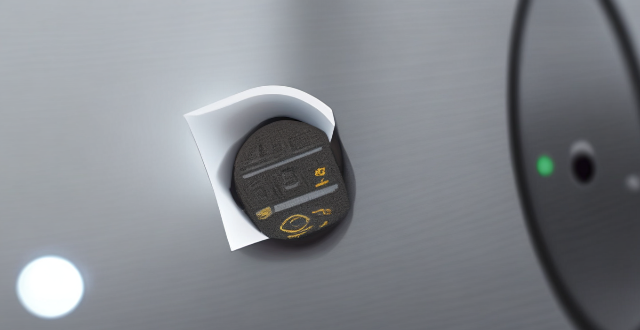
Is it possible to build a DIY speed controller, and how would I go about doing so ?
The article discusses the process of building a DIY speed controller using components such as a microcontroller, motor driver, power supply, and motor. It outlines the steps required to connect the components together and provides example code for programming the microcontroller to control the speed of the motor based on the input from a potentiometer. The article also mentions that testing and troubleshooting may be necessary to ensure proper operation of the speed controller.

How does a PID (Proportional Integral Derivative) controller differ from other types of speed controllers ?
A PID controller uses three control mechanisms to adjust output based on input error, differing from other speed controllers in flexibility and adaptability.
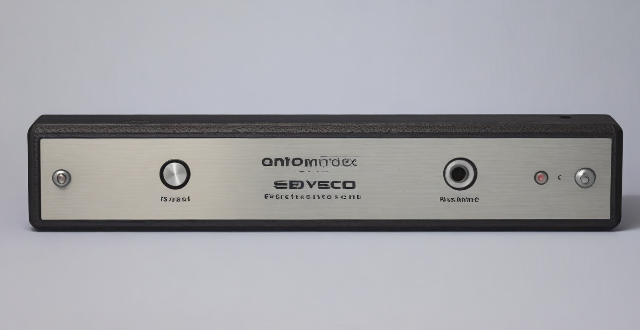
What factors should I consider when choosing an electronic speed controller for my application ?
Choosing the right electronic speed controller for your application requires considering several factors, including power requirements, compatibility with your system, accuracy and precision, ease of use and programming, reliability and durability, and cost-effectiveness. Ensure that the chosen controller can handle the maximum power output required by your system, is compatible with all components, offers accurate and precise control, is easy to program and operate, is reliable and durable enough to withstand harsh operating conditions, and offers good value for money.
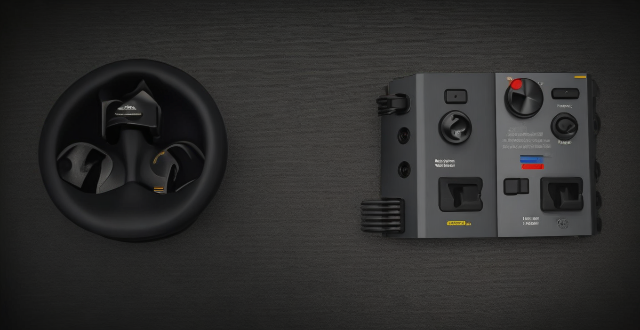
Can a speed controller be used to control the speed of an electric motor ?
A speed controller is a device that adjusts the electrical power supplied to an electric motor to change its speed. There are several types of speed controllers available for electric motors, including variable frequency drives (VFDs), DC motor controllers, and phase controllers. Using a speed controller has benefits such as energy efficiency, improved performance, extended motor lifespan, and enhanced safety.
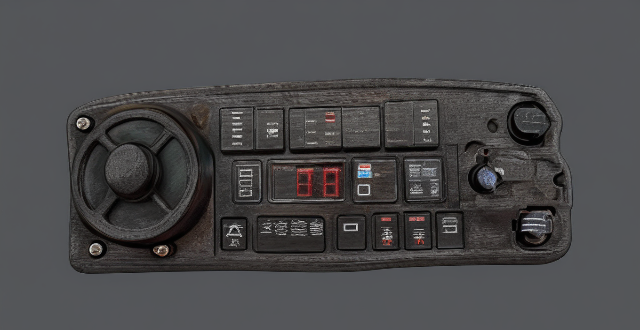
What is a speed controller and how does it work ?
Speed controllers regulate the speed of electric motors and are used in various applications requiring precise speed control, such as industrial machinery. They consist of an input stage for power supply, a control stage using PID controllers to adjust voltage based on motor speed feedback, and an output stage that converts adjusted voltage for motor use.
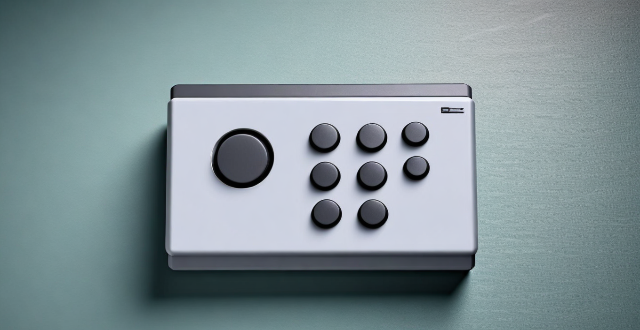
How do I choose the right speed controller for my application ?
Choosing the right speed controller for your application involves considering factors such as the type of control needed, power requirements, performance specifications, compatibility with other system components, and cost-effectiveness. Open-loop systems are simpler and less expensive but less accurate, while closed-loop systems offer higher accuracy at a higher cost and complexity. Power considerations include load inertia, duty cycle, and peak power. Performance factors include accuracy, response time, and stability. Compatibility issues involve motor type, control signals, and mounting options. Lastly, weigh the initial cost against long-term reliability and maintenance expenses to ensure you select a speed controller that meets your needs and budget.

How often should I test my burglar alarm system ?
Test your burglar alarm system monthly to ensure it's functioning properly. Include sensors, detectors, backup power source, and monitoring center communication in the test. Annual maintenance should involve inspecting wiring, cleaning components, and updating software. Test again after home changes or if issues arise.

What safety precautions should be taken while working with a speed controller ?
Working with a speed controller can be dangerous if proper safety precautions are not taken. Here are some important safety measures to consider: ## General Safety Tips - Always wear appropriate personal protective equipment (PPE) such as gloves, safety glasses, and hearing protection when working with a speed controller. - Ensure that the work area is well-lit and free from any tripping or slipping hazards. - Keep all tools and materials organized and stored safely to prevent accidents. - Be aware of your surroundings and any potential hazards that may exist in the work environment. ## Electrical Safety - Disconnect power to the speed controller before performing any maintenance or repairs. - Use insulated tools when working on electrical components. - Avoid touching exposed wires or terminals with bare hands. - Do not work on a speed controller if you are standing on a damp or wet surface. ## Mechanical Safety - Use appropriate lockout/tagout procedures to prevent accidental startup of machinery during maintenance or repair. - Ensure that guards and shields are in place and functioning properly. - Be cautious around moving parts and avoid reaching across or under moving machinery. - Use caution when handling heavy objects to avoid straining muscles or causing injury. ## Chemical Safety - If chemicals are used in conjunction with the speed controller, ensure proper ventilation is provided. - Store chemicals in their original containers and keep them away from heat sources or open flames. - Follow all manufacturer instructions for handling and disposal of chemicals.

Is it possible to upgrade my existing mechanical speed controller to an electronic one ?
Mechanical speed controllers have been used for a long time in various applications, such as fans, pumps, and other machinery. However, with the advancement of technology, electronic speed controllers have become more popular due to their advantages over mechanical ones. In this article, we will discuss whether it is possible to upgrade your existing mechanical speed controller to an electronic one. The first factor to consider is compatibility. You need to ensure that the electronic speed controller is compatible with your existing motor and system. This may require consulting with a professional or the manufacturer of both the motor and the electronic speed controller. Another important factor is power requirements. You need to make sure that the electronic speed controller can handle the power output of your motor. If not, you may need to upgrade your motor as well. Installation is another crucial aspect to consider when upgrading from a mechanical to an electronic speed controller. This may require additional wiring and configuration changes, which should be done by a professional to ensure proper installation and operation. Finally, you need to consider the cost of upgrading. While electronic speed controllers offer many advantages, they can be more expensive than mechanical ones. You should weigh the initial cost against the potential long-term savings in energy consumption and maintenance costs before making a decision. In conclusion, it is possible to upgrade your existing mechanical speed controller to an electronic one, but several factors need to be considered before doing so. These include compatibility, power requirements, installation, and cost. By carefully evaluating these factors and consulting with professionals, you can determine if upgrading is the right choice for your application.

How do I install an electronic speed controller in my vehicle ?
An Electronic Speed Controller (ESC) is a device that regulates the speed of an electric motor. It is commonly used in RC cars, drones, and other electronic devices to maintain consistent speed and improve performance. In the context of vehicles, an ESC can be used to control the speed of electric motors in electric or hybrid cars. Installing an ESC in your vehicle involves several steps, which may vary depending on the specific model and make of your vehicle. Here's a general guide to get you started: 1. Choose the right ESC for your vehicle. 2. Disconnect the battery before working on any electrical system in your vehicle. 3. Remove the old controller (if applicable). 4. Mount the ESC in a suitable location within your vehicle. 5. Connect wires and motor according to the manufacturer's instructions. 6. Reconnect the battery and test the system. There are several reasons why you might want to install an ESC in your vehicle, including improved performance, better control, and additional safety features such as overcurrent protection. When installing an ESC, it's important to follow the manufacturer's instructions, wear protective gear, and seek professional assistance if needed.

How can I manage test anxiety effectively ?
Test anxiety is a common issue among students that can be managed effectively through various strategies. Recognizing symptoms, practicing mindfulness, seeking support, preparing early, and staying healthy are some ways to combat test anxiety. Additionally, visualizing success, using relaxation techniques, setting realistic goals, staying organized, pacing oneself, and focusing on one question at a time can help improve performance. After the test, review mistakes without judgment, reflect on performance, and celebrate efforts regardless of the outcome.

Is there a way to completely eliminate test anxiety ?
Test anxiety is a common problem that affects many students. It can cause physical symptoms such as sweating, trembling, and rapid heartbeat, as well as mental symptoms such as difficulty concentrating and negative thoughts. While it may not be possible to completely eliminate test anxiety, there are several strategies that can help reduce its impact. Understanding Test Anxiety Test anxiety is the feeling of worry or fear that comes before or during an exam. It is a type of performance anxiety, which means it is related to how well you think you will do on the test. The more importance you place on the test, the more anxious you are likely to feel. Strategies for Reducing Test Anxiety Preparation is key to reducing test anxiety. Make sure you have studied thoroughly and understand the material. Create a study schedule and stick to it. This will help you feel more confident and prepared when the test day arrives. Positive thinking can also help reduce test anxiety. Try to replace negative thoughts with positive ones. For example, instead of thinking "I'm going to fail," try saying "I am prepared and I can do this." Visualize yourself succeeding on the test. Relaxation techniques such as deep breathing, meditation, or progressive muscle relaxation can help reduce anxiety. Practice these techniques regularly, not just on the day of the test. Time management is important for reducing test anxiety. Make sure you have enough time to complete the test. Don't wait until the last minute to start studying. Also, manage your time during the test by allocating a certain amount of time for each section. Maintaining a healthy lifestyle can also help reduce test anxiety. Get enough sleep, eat a balanced diet, and exercise regularly. Avoid caffeine and sugar, which can increase anxiety. If your test anxiety is severe, seek support from a counselor or therapist who specializes in anxiety disorders. They can provide additional coping strategies and treatments such as cognitive-behavioral therapy (CBT). Conclusion While it may not be possible to completely eliminate test anxiety, there are several strategies that can help reduce its impact. By understanding test anxiety, preparing thoroughly, practicing positive thinking and relaxation techniques, managing your time effectively, maintaining a healthy lifestyle, and seeking support if needed, you can minimize the effects of test anxiety and improve your performance on exams.

How can I distinguish between normal nervousness and excessive test anxiety ?
Normal nervousness is a natural response to stress, while excessive test anxiety can have negative effects on performance and well-being. Signs of excess test anxiety include excessive worry, avoidance behavior, physical symptoms, negative self-talk, and behavioral changes. Seeking help from a trusted source can provide guidance and support to manage anxiety and improve performance.

What techniques can help me stay calm during a test ?
Techniques to Stay Calm During a Test Staying calm during a test can greatly improve your performance. Here are some techniques that can help you stay focused and relaxed: 1. Deep Breathing: Take slow, deep breaths to slow down your heart rate and lower your blood pressure, reducing feelings of anxiety and stress. 2. Visualization: Picture yourself successfully completing the test and achieving your desired outcome, boosting your confidence and relaxation. 3. Positive Self-Talk: Replace negative thoughts with positive affirmations that boost your confidence and motivation. 4. Break Down the Test into Smaller Parts: Focus on one question at a time without worrying about the others. 5. Time Management: Allocate enough time for each section of the test and stick to your plan, working steadily but efficiently.

Are there any specific exercises for dealing with test anxiety ?
Managing Test Anxiety: Strategies for Success Test anxiety is a common issue faced by many students, especially during exams. It can have a negative impact on performance and overall well-being. However, there are specific exercises that can help in dealing with test anxiety. In this article, we will discuss some effective strategies for managing test anxiety. Mindfulness meditation is a powerful tool for reducing stress and anxiety. By focusing on the present moment and observing thoughts without judgment, you can learn to calm your mind and reduce feelings of anxiety. Deep breathing exercises can help to slow down your heart rate and relax your muscles, reducing feelings of anxiety. Visualization techniques involve imagining yourself successfully completing a task or achieving a goal. This can help to build confidence and reduce anxiety. Cognitive restructuring involves identifying and challenging negative thoughts that contribute to anxiety. By replacing these thoughts with more realistic and positive ones, you can reduce feelings of anxiety. In conclusion, test anxiety is a common issue faced by many students, but there are specific exercises that can help in dealing with it. Mindfulness meditation, deep breathing exercises, visualization techniques, and cognitive restructuring are all effective strategies for managing test anxiety. By practicing these exercises regularly, you can reduce feelings of anxiety and improve your performance on exams.

How often should I test my home security system to ensure it's working properly ?
Testing your home security system regularly is crucial for maintaining its effectiveness and ensuring that it functions as intended when you need it the most. Here are some guidelines on how often you should test various components of your home security system: - Alarms and Sensors: Monthly testing, check batteries every six months - Surveillance Cameras: Weekly check, review footage periodically - Keypads and Control Panels: Monthly verification, test backup power source every six months - Communication Systems: Quarterly testing, phone line check if using a landline - Environmental Sensors: Annually or seasonally testing, replace batteries annually Steps for testing your home security system include consulting your user manual, notifying authorities if connected to a monitoring service, performing visual inspections, testing each component according to recommended frequency, documenting results, and addressing any issues promptly. By following these guidelines and steps, you can ensure that your home security system remains reliable and effective in protecting your home and loved ones.

In 3D graphics, mesh is a set of vertices, edges and faces that define the shape of an object. In the current drawing pipeline, all geometric data in the mesh must be processed sequentially before any other steps can be taken. This can be a major performance bottleneck.
The mesh shader replaces the old pattern with a new geometric processing method, which simplifies the graphics pipeline and provides developers with greater flexibility and control. Mesh shaders can process some segments of the mesh in parallel, called "mesh segments", with a greater degree of flexibility and control.

Users need to update 3dmark software to the latest version, and you can see this option in the "function test" area below the test list. In addition, there are DirectX ray tracing function test, PCI Express function test and so on.
The 3dmark mesh shader function test will show you how the game engine can effectively eliminate the invisible geometry of the camera using the mesh shader pipeline, so as to improve the performance of the game.
The test scenario is a hall containing many rows of carved columns with high fineness. When the camera moves in the scene, the columns in the foreground block the scenery behind.

The 3dmark mesh shader function test includes an interactive mode that can help you intuitively see the benefits of using mesh shaders. You can pause and jump to different parts of the timeline and change settings in real time. Use the visualizer options to highlight mesh clips, or view the level of detail (LOD) used by each mesh clip.

Major update of 3dmark: the function test of mesh shader can be carried out, and dx12 ultimate needs to be supported
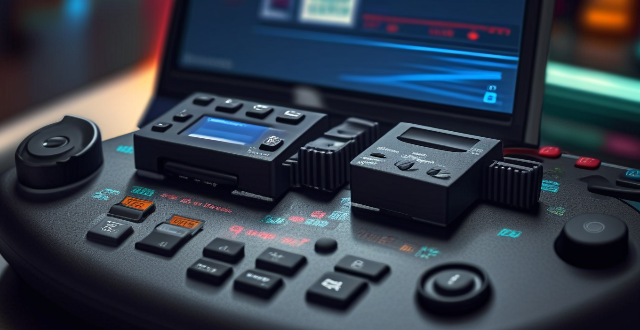
How much does an electronic speed controller cost ?
The cost of an electronic speed controller (ESC) varies depending on brand, type, and features. Popular brands include Hobbywing, Tattu, and SimonK, with prices ranging from $5 to over $100. Brushed ESCs are generally less expensive than brushless ESCs, while more features like higher current ratings and advanced programming options can increase the price. It's important to consider your specific needs and budget when choosing an ESC.

How does a combination motor drive work ?
Combination motor drives integrate VFD and servo controller functionalities to achieve precise speed and torque control for AC induction and permanent magnet synchronous motors. They enhance performance, reduce energy consumption, and extend motor lifespan by offering smooth speed control and reducing wear and tear. Key components include a VFD, servo controller, electric motor, encoder, and user interface. The system uses feedback from an encoder to adjust the motor's input signals, ensuring accurate motion profiles.

What is an electronic speed controller ?
The text provides an overview of electronic speed controllers (ESCs), which are devices used to regulate the power sent to motors in model aircraft and drones. It describes key features such as adjustable throttle, battery protection, signal modulation, and failsafe functionality. The process by which ESCs work is outlined: receiving a signal from the radio transmitter, decoding it into a throttle setting, controlling motor speed based on this setting, and providing feedback to the pilot. Two types of ESCs are mentioned: brushed and brushless, with the latter being more complex and expensive. The text concludes that ESCs are crucial for precise control over motor speed and aircraft performance.
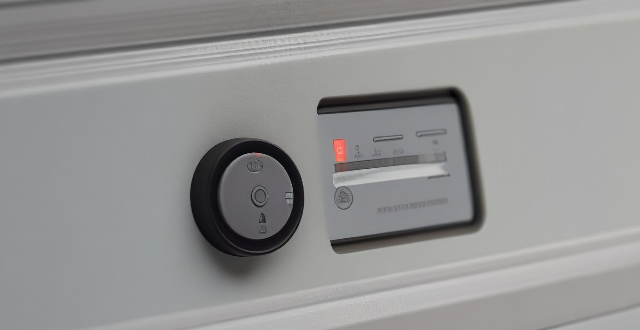
How does an electronic speed controller work ?
An electronic speed controller (ESC) regulates the speed of an electric motor by controlling the electrical power sent to it. It receives a signal, typically a pulse-width modulation (PWM) signal, which it interprets as a desired speed for the motor. The ESC then converts this low-power signal into a high-power electrical current that can drive the motor. By adjusting the duty cycle of the PWM signal, the ESC controls the motor's speed and torque. It also includes features such as overcurrent protection and cooling to ensure reliable operation. Some ESCs even have a feedback loop to monitor the actual speed of the motor and adjust the power output accordingly.

What are the benefits of using an electronic speed controller ?
Benefits of Using an Electronic Speed Controller An electronic speed controller (ESC) regulates the speed of electric motors by controlling the amount of electrical power delivered to them. It is a crucial component in many electronic devices, particularly in the field of robotics and drones. The benefits of using an ESC include precision control over the motor's speed, increased efficiency by reducing energy consumption, improved safety by preventing damage to components, enhanced performance by allowing for more precise control over the motor's speed, and reduced maintenance costs. These benefits make ESCs essential components in many electronic devices and systems.
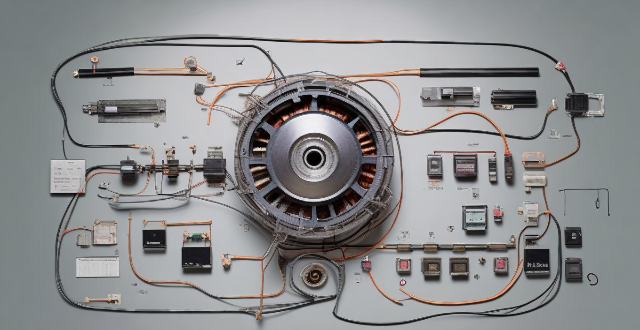
How does a brushless motor work ?
Brushless motors, also known as BLDC motors, are electric motors that use an electronic controller to switch the current in their stator windings. They consist of three main components: the rotor, stator, and electronic controller. The working principle of a brushless motor involves initial rotation, commutation, and maintaining rotation. Brushless motors offer several advantages over traditional brushed motors, including higher efficiency, longer lifespan, better performance, and lower maintenance.
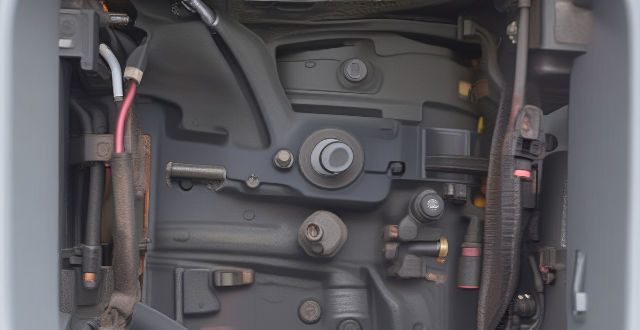
Can an electronic speed controller be used in a car engine ?
The question of whether an electronic speed controller (ESC) can be used in a car engine depends on the type of engine. In traditional internal combustion engines (ICE), which use gasoline or diesel as fuel, an ESC cannot be used because these engines rely on mechanical systems for speed control. However, in electric cars, which use electric motors as their primary source of propulsion, an ESC is essential for controlling the speed of the motor and protecting it from damage. Therefore, while an ESC cannot be used in ICE vehicles, it plays a crucial role in electric vehicles.
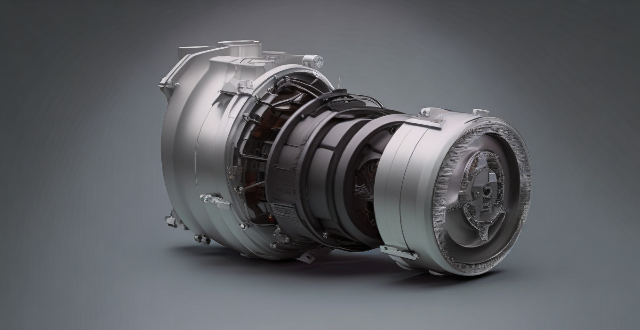
What is a brushless motor ?
Brushless motors, also known as BLDC (Brushless Direct Current) motors, are electric motors that use an electronic controller to switch the current in their stator windings. They have higher efficiency, longer lifespan, higher power density, lower maintenance requirements, and quieter operation compared to brushed motors. The working principle of a brushless motor involves three main components: the rotor, stator, and electronic controller. Brushless motors are used in various applications, including aircraft, automotive, appliances, and industrial equipment.

Are there any disadvantages to using an electronic speed controller ?
Electronic speed controllers (ESCs) have some drawbacks, including complexity, cost, battery drain, and compatibility issues.